Push mower setup
Finally after fixing my reassembly issues with my Ajax mower i have a cutting issue. Ive not used a push mower in 40 years and have no idea on how it should feel, or how hard to push.
Rear roller stripped and re greased, same for cylinder bearings and drive gear. All spin freely, but how freely should they spin? Like the wheel on a bike that spins for a minute or so?
Pushing it on the path with front rollers in the air and the cylinder spins, but on the lawn the rear roll keeps locking up on a dry lawn and it does feel very stiff. With no experience of how one should feel i cant attempt to diagnose and fix the problem. Im sure having to push down on the handles to add more weight to the roller then walking at speed to keep things going is not how Ransomes designed it.
Forums
I used a very small amount of
I used a very small amount of grease just on the cogs, the rest is oil from the oil gun. Rear roller and cylinder spin free, combined its very stiff.
I cant find your video just yet.
The full title is RANSOMES
The full title is RANSOMES AJAX MK 5 cylinder mower 1964 - 1972.
I'm sorry I can't be more help with the stiff rollers unless it's actually set too low and it's catching on the ground. Did you measure the height of the bottom blade?
Ransomes have always
Ransomes have always recommended the use of SAE 30 or 40 oil, not grease, for bearings and bushes. A smear of medium grease on gear wheels wont hurt.
If the mower moves freely with the front raised but not when on grass, it is almost certainly set too low. That assumes that the cylinder blades and the bottom blade have been sharpened correctly.
Release the cylinder from the
Release the cylinder from the bottom blade, raise the cutting height and try, gradually reduce cutting height and adjust cylinder to get it bang on, if blades aren't sharp the grass can bind between the cutter and bottom blade and stop the mower dead.
Oiled it all up amd its
Oiled it all up amd its better but i cant let the cylinder touch the bottom blade. Maybe it needs a few runs to losten up and get the oil circulating. Put my keeper mower together and that one feels smoother but was in far better condition. https://youtu.be/HO5NnmT5gZc 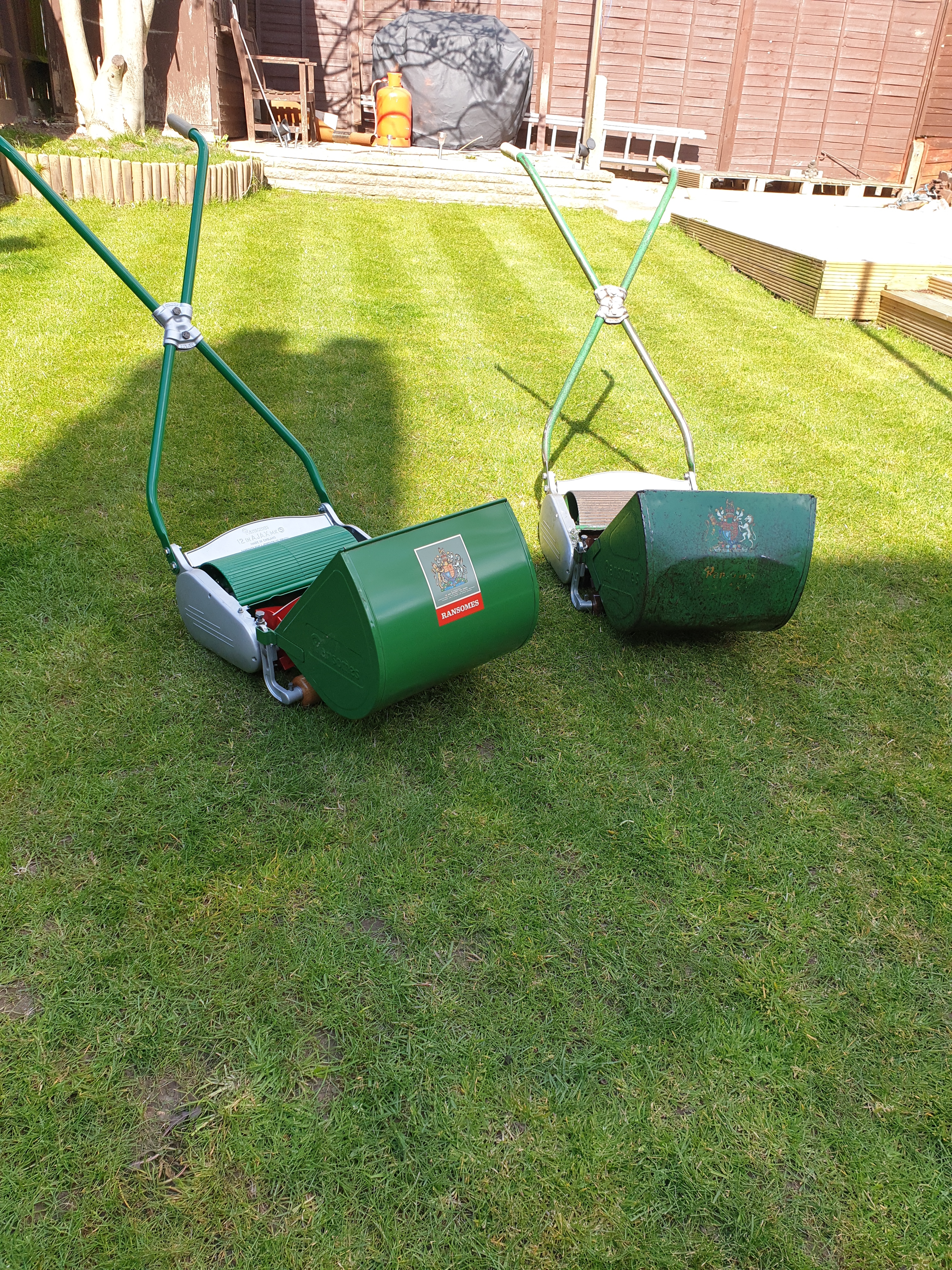
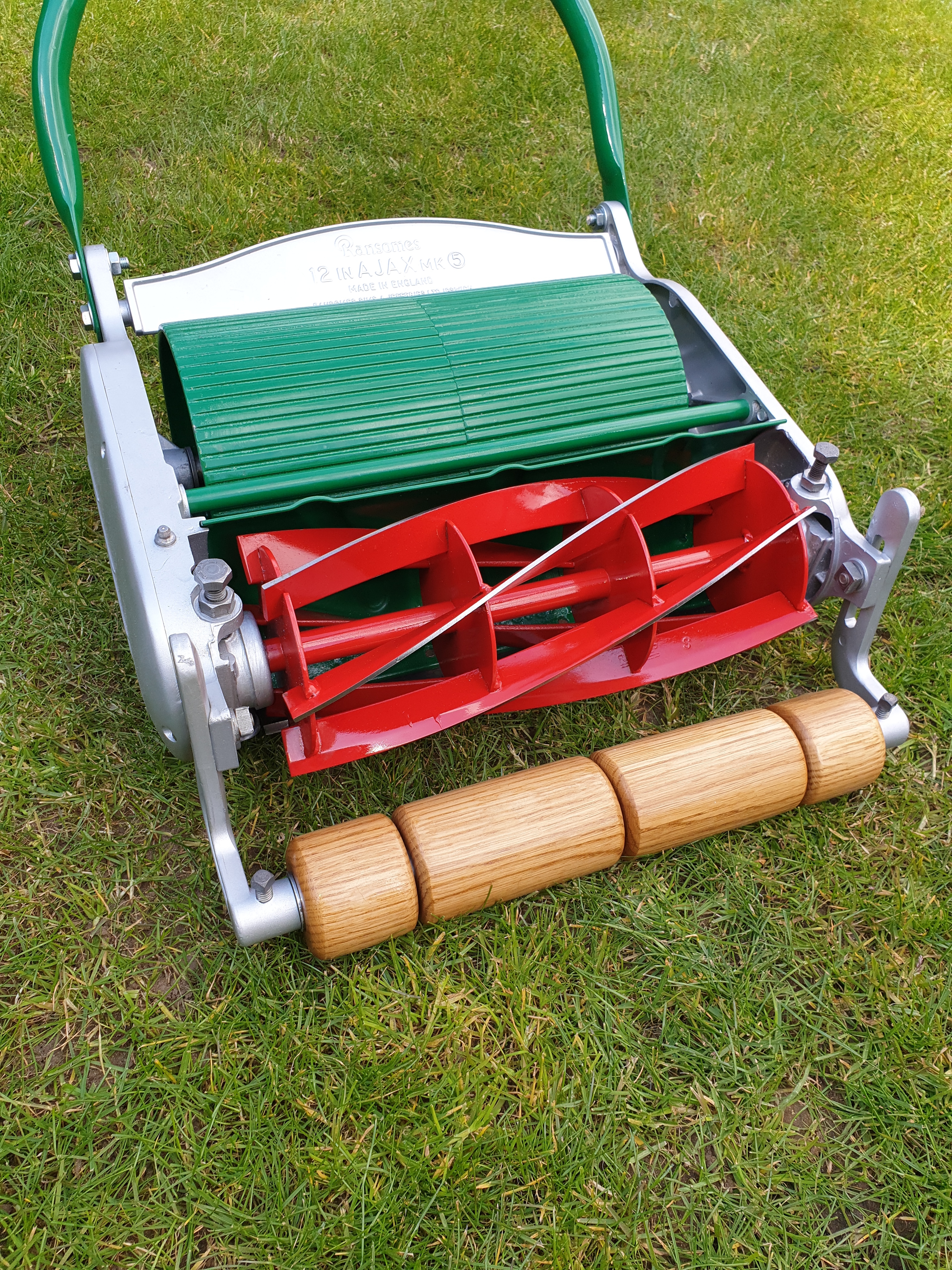
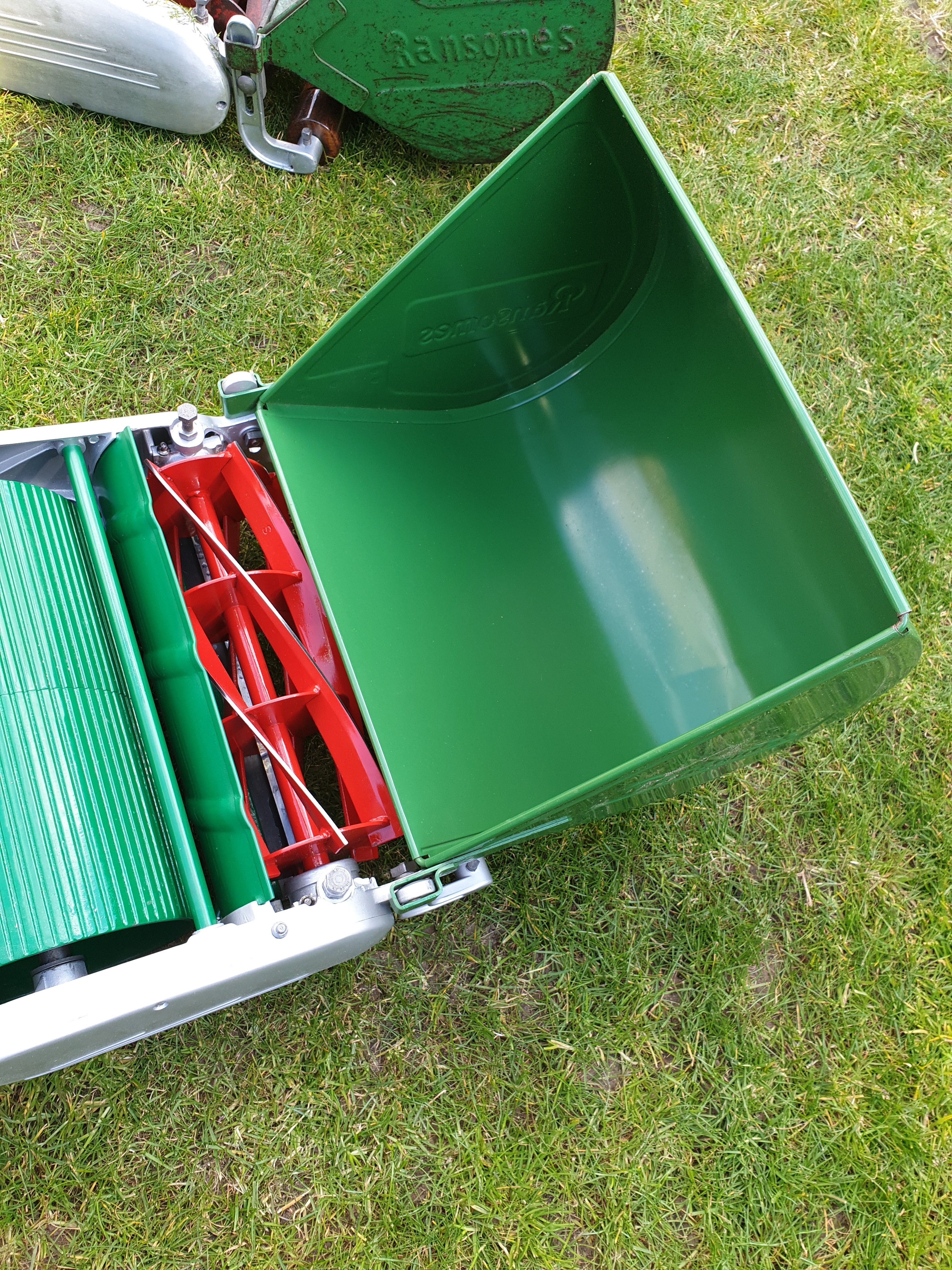
Is it an effect of the
Is it an effect of the picture or the viewing angle, but is that bottom blade ground flat, or to put it another way, do the cylinder blades contact the front and back edges of the ground area ?
It is ground flat but there
It is ground flat but there is a 1mm clearance as im not using it....yet.
Not great quality.
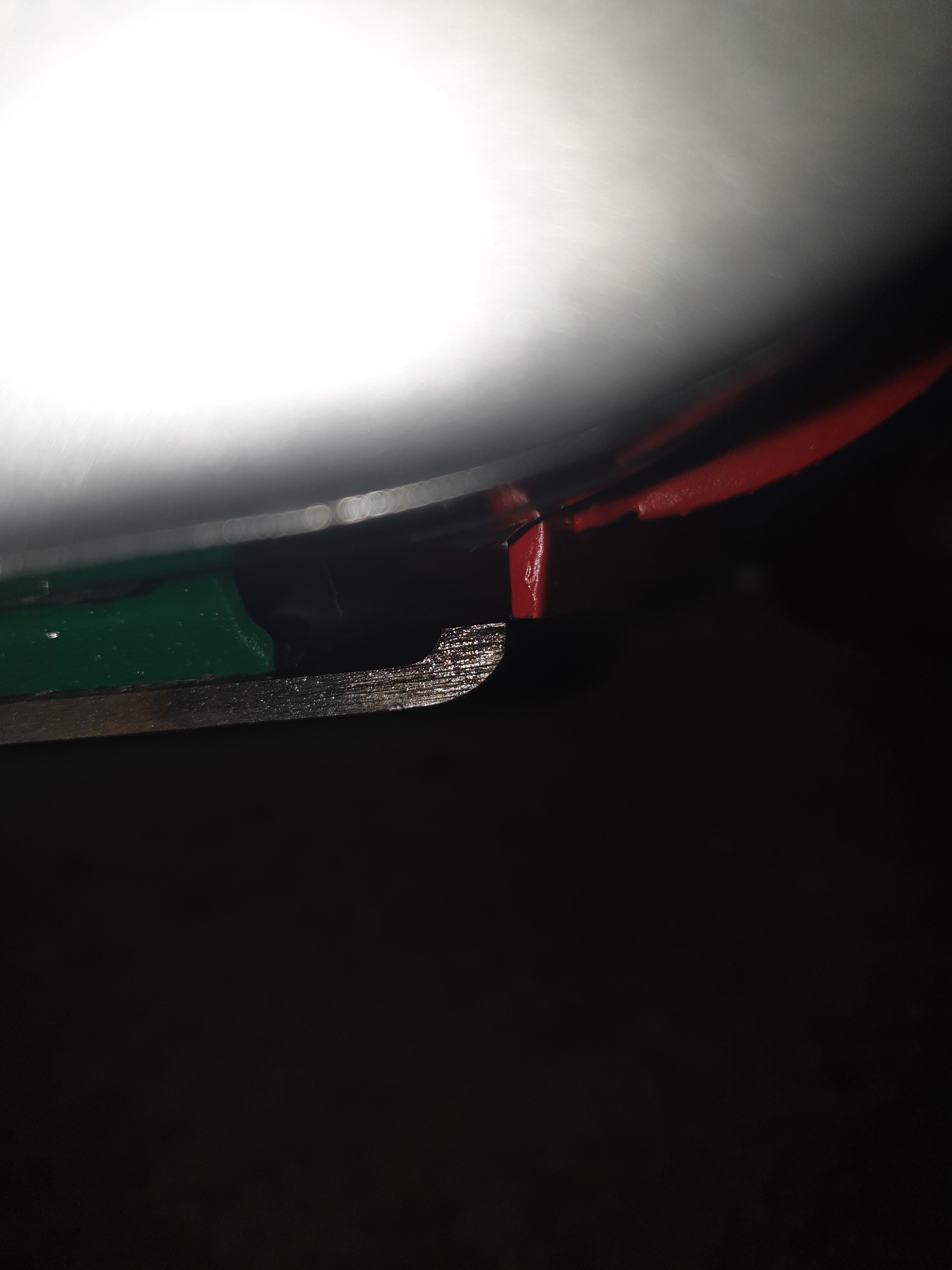
Bottom blade would be better
Bottom blade would be better ground ( as in grinded !!) with a bit of back relief.
Bottom blade would be better
Bottom blade would be better
Bottom blade would be better ground ( as in grinded !!) with a bit of back relief.
It was ground flat even though it was brand new. I think i found the problem in that the cylinder was set to high. I had it at 25mm using straight edge across the rollers and measurement from straight edge to cylinder blade where it touches the bottom blade.
Ive now used the same method and dropped it to 15mm which gave a nice cut.
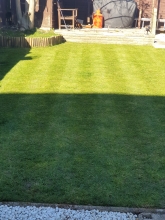
You know that I advised you
You know that I advised you to find someone else to do your grinding, well I am now telling you again, find someone else to do your grinding.
The blades on your cylinder are making too much contact with the bottom blade, this is because the cylinder blades are virtually flat (probably allowed to spin-out) and the bottom blade has been ground flat. They both should have relief angles and only the blade tips should make contact and light contact at that. As they are now, they will very quickly wear and will make correct blade setup extremely difficult, if not impossible. If ground correctly and setup correctly, a handmower should, when pushed on a hard surface, move easily and continue for a short distance if let go, it should also crisply cut grass.
Thats not what i wanted to
Thats not what i wanted to hear. At just under £70 a go its not cheap. Would i have any comeback with the company that did them, and how to i find a place local that can do them properly?
Probably not, if they know no
Probably not, if they know no better they will maintain that they are doing it correctly. Just what did you get for your £70? You presented them with a clean cylinder out of the machine ? They painted it and ground it ? You gave them a sole plate with a new bottom blade fitted? They skimmed it ?
Worse than that im afraid. I
Worse than that im afraid. I gave them a fresh painted laquered cylinder and a new bottom blade on its sole plate. They ground both. Is the relief grind only done on the bottom blade? Im starting to think this is the issue im having setting it up, to get a clean cut i need the blades touching, but when they touch its over the 3mm thickness, therefore making it a bugger to push. It also doesnt sound right if that makes sense, its a grinding sound and not that brief crisp scissor sound.
If the relief grind is just on the bottom blade can i do it? I have grinding equipement and am a carpenter so know how to sharpen most things.
Hi, WP, could you kindly add
Hi, WP, could you kindly add an image of the bottom blade and cylinder correctly sharpened please. Novices like me have no idea? Am I right in thinking that when a cylinder spins, the cutting angle is close to 90 degrees? Or am I way off. A latteral view like above would be great. Lee
Worse than that im afraid. I
Worse than that im afraid. I gave them a fresh painted laquered cylinder and a new bottom blade on its sole plate. .....
I would not normally single blade relief grind an Ajax cylinder but when spin grinding it I would give a couple of hard passes of the grinding wheel to impart some relief. When grinding the bottom blade, either flat or lipped, I would tilt it a few degrees forward to create a lower or relieved area just behind the front edge. In addition vertical front edge may be ground just past 90 degrees to the top edge but that is unusual on a domestic machine. On a commercial machine this undercut is usually in the region of five degrees.
A useful reference is the link to the Toro Reel Mower tutorial that I posted a week or two ago.
Lee and Wristpin im going to
Lee and Wristpin im going to post a video up tomorrow and add more very clear images. So many conflicting reports regarding relief grinding, i dont know why all are not done to save fuel, blade wear or physical pushing wear.
The new bottom blade i have is also a lot larger than the original, the ground surface must be 2-3mm wider. Again ill add a lot more pictures and video tomorrow.
The new bottom blade i have
The new bottom blade i have is also a lot larger than the original, the ground surface must be 2-3mm wider. Again ill add a lot more pictures and video tomorrow.
All the more reason to put some back relief on it. Guessing that it may be a pattern item from one of the after market suppliers.
As Wristpin has said, when
As Wristpin has said, when spin grinding a cylinder, the last few passes of the grindstone need to be 'hard' on. When you spin grind a cylinder, it is spun backwards and the metal is removed from the rear edge of each blade first. If you leave it to 'spin' out, each blade will end up virtually flat, but the couple of 'hard' passes will remove metal from the rear edge and you will end up with the front, cutting, edge higher than the rear edge.
As for the bottom blade, this needs to be ground true to its mounting points and will, in most cases, be ground in such a way that the front edge is higher than the rear edge of the ground portion. This is done to ensure you only get and need minimal contact between cylinder and bottom blade.
If you want to understand this further, examine a good quality pair of scissors or shears. These are 'hollow' ground and you should see that only the cutting edges touch.
Your pictures seem to show that your cylinder blades will touch and 'wipe' across the entire ground portion of the bottom blade, front to back, this will lead to very quick wear of the ground surfaces. If the blades are ground incorrectly (it isn't just a very bad photo), then the only way to fix this is to regrind them again. You could ask your supplier if they have an in-situ grinder (Bernard Dual or similar), if so, then you will not need to totally strip it down again.
Hi,Everyone,
Hi,Everyone,
I've heard enough,it is easy in heine sight to point the finger,everyone here is trying to help, there is a perfect answer, just ask your past Chairman Peter Hampton the best in the business! by far.Being when working a territory Manager for Bernhards,he use to set up cutting cylinders for golf courses for International Championships.
I'm sure he'd love to help as he's sat at home self isolating.Warpa speak to him on the phone, he's in the directory, as he has a set of grinders in the garage, its time to rally around our older members, get them involved
There endeth the first lesson of today
Kind regards
Andrew
Some clearer images. Looking
Some clearer images. Looking at the cylinder blades they appear to not hit square onto the bottom blade?
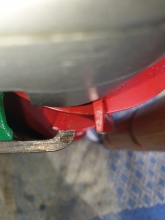
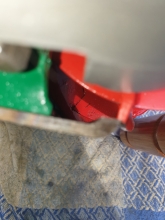
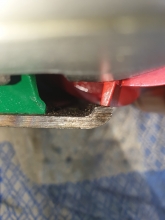
Video cutting paper;


Hi Warpa
Hi Warpa
Being bored with the lockdown etc I have just made a short video called Ransomes Ajax Mk 5 1964-1972 and it's on YouTube. You can see one being used and how it rolls when set up properly. As an aside i don't use grease because it can go hard over time in the oiling channels and blocks them but others may disagree on this. Maybe a talking point for more discussion.